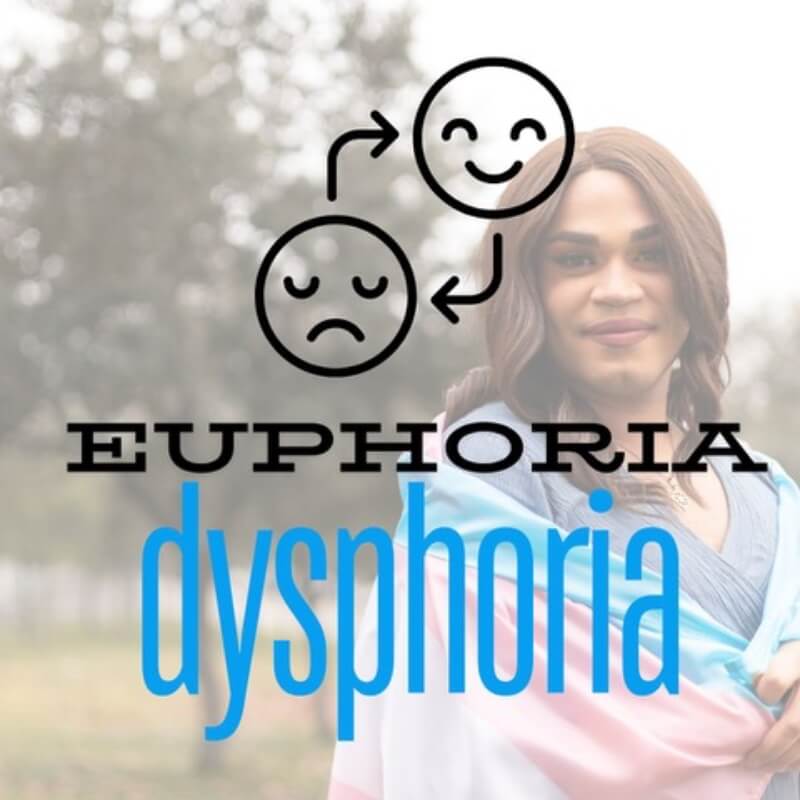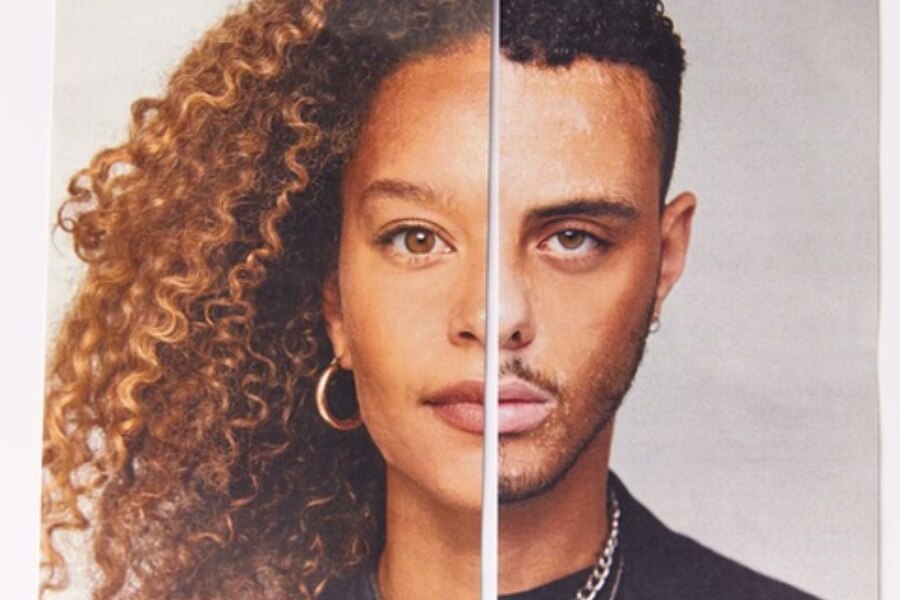Author: Morgan Bishop
First published: 6-11-2024
Hi, I’m Morgan (she/her). I am one of the clinicians here at J&R Psychology. I am a transfeminine person and have lived experience as a trans person. I wanted to share some perspective about gender dysphoria and euphoria, as I thought this might be helpful for people looking to learn more about these subjects.
Sex and gender are distinct concepts. Sex refers to the biological attributes associated with humans, including genetic markers like chromosomes and physical characteristics such as primary (e.g., gonads, genitalia, reproductive organs) and secondary (e.g., body hair, fat distribution) sex traits.
Gender, on the other hand, is the personal interpretation of one’s sex. It has been discussed in various ways. Often, gender is viewed as a performance—behaviours and appearances that signal one’s gender identity, such as having short hair which is perceived as more masculine. Additionally, gender is seen as a social construct; for example, skirts are commonly associated with femininity today, even though men wore them in earlier societies. Similarly, pink is often linked to femininity now, while it was once considered a masculine colour, viewed as bold and daring.
Gender can also be understood as negotiated. People often categorise others based on their appearance, labelling them as masculine or feminine according to societal norms.
Being transgender can be thought of as a mismatch between one’s gender identity and biological sex, leading to significant discomfort or dysphoria when one’s gender does not align with their physical characteristics.
Gender dysphoria, as defined in the diagnostic manual, DSM-5-TR, is a marked incongruence between one’s experience/expressed gender and assigned gender. The subsequent criteria go on to define several examples of how dysphoria may manifest in individuals, such as a desire to wear clothes typically associated with another gender, strong identification and engagement with objects and activities typically associated with another gender, and so on. The DSM definition does not cover all aspects of gender dysphoria or gender identity, and it is here where connection with community and lived experience can provide valuable insights.
The Gender Dysphoria Bible (GDB) (https://genderdysphoria.fyi/) is a great resource created and maintained by trans people. It describes gender dysphoria from multiple angles, dividing dysphoria into a number of categories. I will touch upon a few here and how it can assist us in more fully understanding what gender dysphoria means.
Categories covered in the GDB include physical, biochemical, social, societal, sexual, presentational, and existential dysphoria. I will, however, first discuss gender euphoria, as this is often overlooked but very important in understanding gender dysphoria.

Gender Euphoria refers to those aspects of gender experience and expression that bring you joy. This is an aspect of gender and the trans experience that is often missed. All of us find gender euphoria in something, be it a new haircut, new item of clothing, a particular compliment from someone, and so on. Many people exploring their gender are guided by these experiences, finding joy in altering their gender expression, be that experimenting with makeup, nail polish, changing their hairstyle, etc. Many trans people discover themselves through the experience of gender euphoria. I’ll move now to describe aspects of gender dysphoria.
Physical Dysphoria is dysphoria with aspects of one’s sex characteristics, both primary and secondary. Examples of primary sex characteristics are aspects of genitalia and reproductive organs. Secondary characteristics refer to other identifiers of sex, such as muscle mass and body hair.
Biochemical Dysphoria refers to a feeling of disconnection between oneself and their physical body. This can manifest in depersonalisation and derealisation. Depersonalisation refers to a sense of disconnection from yourself, feeling as though you are not truly living the experiences being perceived by your body. Derealisation is a detachment from the world you inhabit, a feeling that nothing around you is quite real.
Social Dysphoria relates to the experience of how you interact with the world, how others perceive and treat you and how you navigate the world. This is a difficult concept to explain. I personally like the simile of gender being a performance, something that you feel you are constantly trying to communicate, as though you are an actor. You are doing your best to fit this role and feel as though you are coming up short and aren’t believable. It feels like everyone else already knows their lines and act their parts well, while you haven’t and don’t even particularly like the script that you were given. I like this video by Philosophy Tube (https://youtu.be/AITRzvm0Xtg?si=lbchzV-kFIzK1oIz) in which the presenter discusses gender identity and transness from multiple angles and has a fantastic description of social dysphoria that I cannot capture in this text.
Societal Dysphoria refers to the dysphoria associated with the roles and expectations we experience when we are gendered a particular way. This may include dysphoria with the idea of being a husband or wife, being a brother or sister, being an aunt or uncle and so on.
Sexual Dysphoria refers to the dysphoria associated with sex. This naturally covers many aspects and may include dysphoria with the role you play in sex, your genitals, how you interact with your partner and so on.
Presentational Dysphoria refers to your physical appearance, your gender expression. This relates to the clothing you wear, your hairstyle, your glasses and accessories etc. Our appearance is often used as data to infer gender onto others and dysphoria can come from a strong discomfort from the way you present, the gender you identify with not matching your gender expression.
Existential Dysphoria relates to the existential dread associated with continuing to live in your current gender, the gender that is the source of your dysphoria. If your gender identity does not match your gender experience and expression etc., it can cause a significant discomfort that can lead to this existential dread. This dread being a deep worry about how long you can tolerate this discomfort.
Gender dysphoria can be managed in a variety of ways, such as medication like testosterone or estrogen, as well as through presentational changes, such as clothing and body modification. Body modifications might include hairstyle changes, hair removal, and the use of clothing to alter the appearance of sex characteristics like binding or tucking.
In summary, transness is something that many people do not understand, as they have not had experience with it before. It includes gender dysphoria and euphoria, as well as methods of managing dysphoria and moving towards gender euphoria. These methods capture many aspects of gender and manifest through medication, clothing, body modification and many other things. I hope this article has helped you learn a little more about the trans experience.
If you are seeking assistance with understanding more about gender and navigating this, feel free to contact J&R Psychology. You can also access a list of providers here (https://auspath.org.au/providers/) if you are looking for providers to meet a range of needs to support those in trans community.




